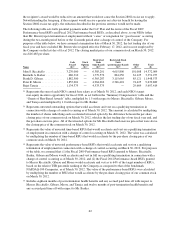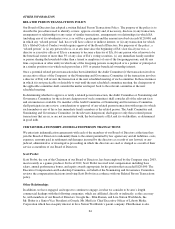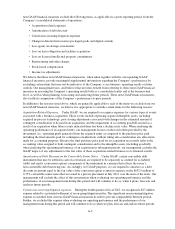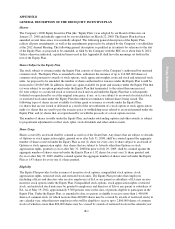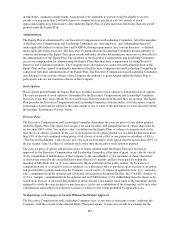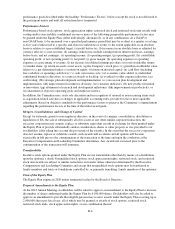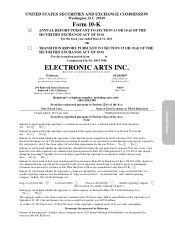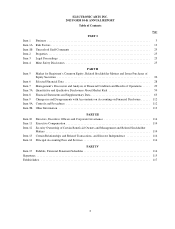Electronic Arts 2012 Annual Report Download - page 76
Download and view the complete annual report
Please find page 76 of the 2012 Electronic Arts annual report below. You can navigate through the pages in the report by either clicking on the pages listed below, or by using the keyword search tool below to find specific information within the annual report.non-GAAP financial measures exclude the following items, as applicable in a given reporting period, from the
Company’s consolidated statements of operations:
• Acquisition-related expenses
• Amortization of debt discount
• Certain non-recurring litigation expenses
• Change in deferred net revenue (packaged goods and digital content)
• Loss (gain) on strategic investments
• Loss on lease obligation and facilities acquisition
• Loss on licensed intellectual property commitment
• Restructuring and other charges
• Stock-based compensation
• Income tax adjustments
We believe that these non-GAAP financial measures, when taken together with the corresponding GAAP
financial measures, provide meaningful supplemental information regarding the Company’s performance by
excluding certain items that may not be indicative of the Company’s core business, operating results or future
outlook. Our management uses, and believes that investors benefit from referring to, these non-GAAP financial
measures in assessing the Company’s operating results both as a consolidated entity and at the business unit
level, as well as when planning, forecasting and analyzing future periods. These non-GAAP financial measures
also facilitate comparisons of the Company’s performance to prior periods.
In addition to the reasons stated above, which are generally applicable to each of the items we exclude from our
non-GAAP financial measures, we believe it is appropriate to exclude certain items for the following reasons:
Acquisition-Related Expenses. Under GAAP, we are required to recognize expenses for various types of events
associated with a business acquisition. These events include expensing acquired intangible assets, including
acquired in-process technology, post-closing adjustments associated with changes in the estimated amount of
contingent consideration to be paid in an acquisition, and the impairment of accounting goodwill created as a
result of an acquisition when future events indicated there has been a decline in its value. When analyzing the
operating performance of an acquired entity, our management focuses on the total return provided by the
investment (i.e., operating profit generated from the acquired entity as compared to the purchase price paid
including the final amounts paid for contingent consideration) without taking into consideration any allocations
made for accounting purposes. Because the final purchase price paid for an acquisition necessarily reflects the
accounting value assigned to both contingent consideration and to the intangible assets (including goodwill),
when analyzing the operating performance of an acquisition in subsequent periods, our management excludes the
GAAP impact of any adjustments to the fair value of these acquisition-related balances to its financial results.
Amortization of Debt Discount on the Convertible Senior Notes. Under GAAP, certain convertible debt
instruments that may be settled in cash on conversion are required to be separately accounted for as liability
(debt) and equity (conversion option) components of the instrument in a manner that reflects the issuer’s
non-convertible debt borrowing rate. Accordingly, for GAAP purposes, we are required to amortize as a debt
discount an amount equal to the fair value of the conversion option as interest expense on the $632.5 million of
0.75% convertible senior notes that we issued in a private placement in July 2011 over the term of the notes. Our
management will exclude the effect of this amortization when evaluating our operating performance and the
performance of our management team during this period and will continue to do so, when it plans, forecasts and
analyzes future periods.
Certain non-recurring litigation expenses. During the fourth quarter of fiscal 2012, we recognized a $27 million
expense related to a potential settlement of an on-going litigation matter. This significant non-recurring litigation
expense is excluded from our non-GAAP financial measures in order to provide comparability between periods.
Further, we excluded this expense when evaluating our operating performance and the performance of our
management team during this period and will continue to do so when we plan, forecast and analyze future periods.
A-2






